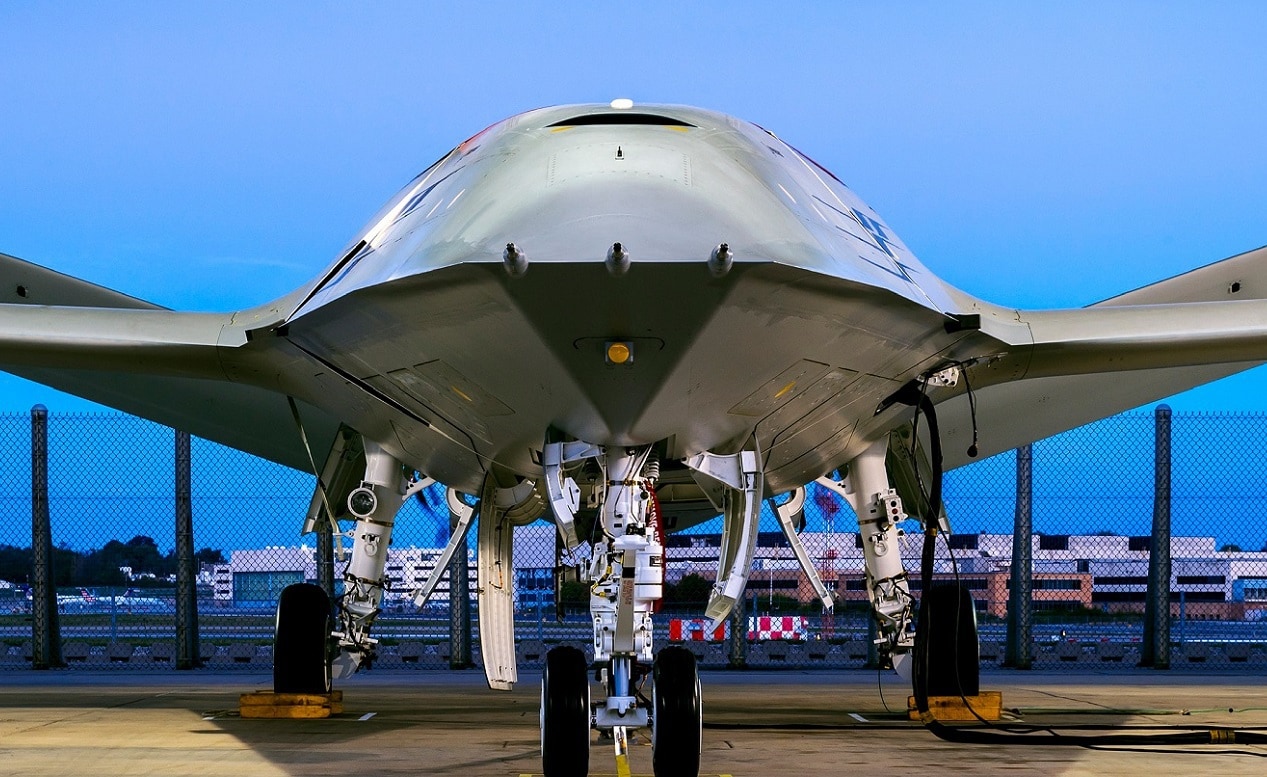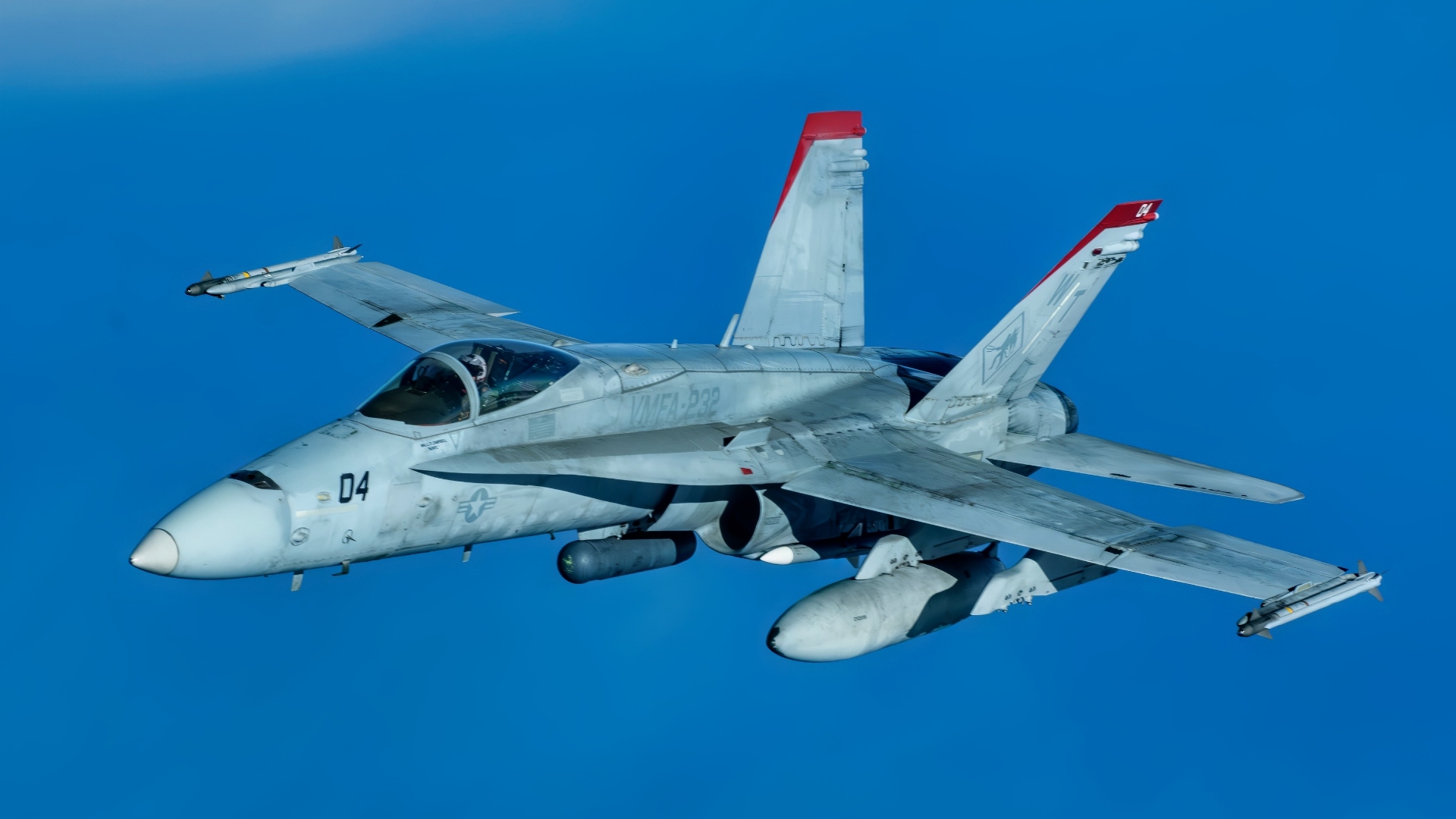Key Points and Summary – The MQ-25 Stingray is the U.S. Navy’s first carrier-based unmanned aerial refueler, a transformative aircraft designed to solve a critical need.
-By taking over tanking duties, the MQ-25 frees up F/A-18 Super Hornets for their primary combat roles, effectively increasing the carrier’s strike capacity.

MQ-25. Image Credit: Creative Commons.
-The drone can deliver 15,000 pounds of fuel 500 nautical miles away, significantly extending the range of the entire air wing.
-Beyond refueling, the Stingray will serve as an ISR platform and a crucial “pathfinder” for the Navy’s future integration of manned and unmanned aircraft.
The MQ-25: A Game Changer?
Today, in the defense industry, unmanned systems are a primary focus.
These systems allow the military to perform functions like reconnaissance, aerial refueling, or perform strike missions without putting any human pilots in harm’s way.
In recent times, the U.S. Navy has been making considerable progress with its own unmanned aerial refueler, the MQ-25 Stingray.
This aircraft, while not as impressive as other next-generation platforms, fills a much-needed role in naval aviation.
For some years now, the Navy has needed a dedicated refueler aircraft, often using repurposed F/A-18s for the job.

A U.S. Marine Corps F/A-18 Hornet pulls away from a U.S. Air Force KC-135 Stratotanker from Kadena Air Base after refueling over the Pacific Jan. 3, 2024. Conducting joint operations enhances the lethality and readiness of U.S. forces and its ability to project superior airpower to the Indo-Pacific region. (U.S. Air Force photo by Senior Airman Cedriue Oldaker)
The Stingray offers to fill that gap while also providing a platform for ISR or even strike missions.
Design and Development
Work on the MQ-25 began in 2006, when the Navy and DARPA initiated an exploration of the concept of a carrier-based unmanned combat aerial vehicle (UCAV).
This initiative evolved into the Unmanned Carrier-Launched Airborne Surveillance and Strike (UCLASS) program, which aimed to develop a stealthy UAV capable of ISR and precision strike missions.
However, changing strategic priorities and budgetary constraints led to a redefinition of the program’s goals.
By 2016, the Navy shifted its focus from strike capabilities to a more immediate operational need: aerial refueling.
This pivot resulted in the Carrier-Based Aerial-Refueling System (CBARS) program, which eventually became the MQ-25 Stingray initiative.
Boeing, leveraging its extensive experience in naval aviation and unmanned systems, won the contract in 2018 to develop the MQ-25.
The MQ-25 Stingray is a sleek, wing-body-tail aircraft optimized for endurance and carrier operations. It is powered by a Rolls-Royce AE 3007N turbofan engine, which delivers over 10,000 pounds of thrust.
The aircraft has a wingspan of 75 feet, which folds to 31.3 feet for efficient storage aboard aircraft carriers.
It measures 51 feet in length and stands 15.7 feet tall with its wings folded. The MQ-25 is capable of delivering up to 15,000 pounds of fuel at a range of 500 nautical miles, significantly extending the operational reach of carrier-based aircraft.
It can reach speeds of up to 620 kilometers per hour and has a service ceiling of 39,000 feet. Its design features a V-tail configuration and a flush inlet to reduce radar cross-section, enhancing its stealth profile.
The aircraft is equipped with folding wings, arrestor gear, and robust landing gear to support carrier launch and recovery operations.
Filling a Much-Needed Gap
The primary mission of the MQ-25 is aerial refueling, a capability that addresses a longstanding gap in the Navy’s carrier air wing. This would be key in a conflict against China, where range and distance matter.
Traditionally, F/A-18 Super Hornets have been diverted from combat roles to serve as tankers, reducing the number of aircraft available for strike missions.

A joint test team including the Flight Test Division of the French Directorate General of Armaments (DGA/EV), the French Naval Aeronautics Experimentation Center (CEPA/10S), and the U.S. Navy’s Air Test and Evaluation Squadron (VX) 23 are leading flight tests that will enable the French fighter jet Dassault Rafale to aerial refuel with naval aviation’s F/A-18 Hornet and Super Hornet and EA-18G Growler. The tanker qualification partnership paves the way for an extended reach and enhanced interoperability for allied airpower. (U.S. Navy photo by Erik Hildebrandt) Erik_Hildebrandt
The MQ-25 alleviates this burden by taking over the refueling role, allowing more fighters to focus on their primary missions.
In addition to refueling, the MQ-25 has secondary roles in ISR, communications relay, and manned-unmanned teaming. These capabilities enable it to provide persistent surveillance, enhance networked operations across the carrier strike group, and serve as a pathfinder for future collaborative operations between crewed and autonomous platforms.
The MQ-25 program has undergone extensive testing and integration. The T1 test asset first flew on September 19, 2019, and has since accumulated over 125 flight hours.
It made history by becoming the first unmanned aircraft to refuel another aircraft in flight, successfully transferring fuel to an F/A-18, E-2D Hawkeye, and F-35C.
Carrier integration trials began aboard the USS George H.W. Bush (CVN-77), where the MQ-25 demonstrated its ability to operate on the flight deck, maneuver within tight spaces, and interface with carrier systems.
These tests validated its deck handling and launch/recovery capabilities, proving that the MQ-25 can function effectively in the complex environment of a carrier.
The MQ-25 is currently in low-rate initial production, with the Navy planning to procure 76 aircraft, including 67 operational units and 9 test assets.
The first operational flights are expected in 2025, with full carrier integration slated for 2026. Production is centered at Boeing’s facilities in St. Louis, Missouri, with additional testing conducted at NAS Patuxent River, Lakehurst, New Jersey, and Eglin Air Force Base, Florida.
What the MQ-25 Stingray Means
The MQ-25 is an experimental and transformative enabler that reshapes the carrier air wing. By offloading refueling duties from manned aircraft, the MQ-25 allows strike fighters to operate at greater distances, enhancing the carrier’s power projection capabilities.
This extended operational reach is crucial in contested environments where carriers must operate farther from potential threats.
Additionally, the MQ-25 increases combat efficiency by freeing up F/A-18s for strike missions, thereby boosting sortie rates and overall firepower. The use of unmanned refueling also reduces wear and tear on manned platforms and lowers operational risk by removing pilots from hazardous missions.
Beyond its immediate operational benefits, the MQ-25 serves as a foundation for future carrier-based unmanned systems. It is a pathfinder for the “Air Wing of the Future,” where manned-unmanned teaming becomes the norm.
The Stingray’s successful integration into carrier operations demonstrates the feasibility of deploying autonomous systems in complex maritime environments.
It also sets the stage for future UAVs with strike, electronic warfare, and advanced ISR capabilities, further enhancing the Navy’s ability to conduct distributed and networked operations.
About the Author: Isaac Seitz
Isaac Seitz, a Defense Columnist, graduated from Patrick Henry College’s Strategic Intelligence and National Security program. He has also studied Russian at Middlebury Language Schools and has worked as an intelligence Analyst in the private sector.
More Military
The First 48 Hours of a War With China ‘Could Be Ugly’
Russia Tried to Build Their Very Own F-22 Raptor. Calling It a Disaster Would Be a Gift
The Royal Navy’s Queen Elizabeth-Class Aircraft Carriers Simply Summed Up in 4 Words










